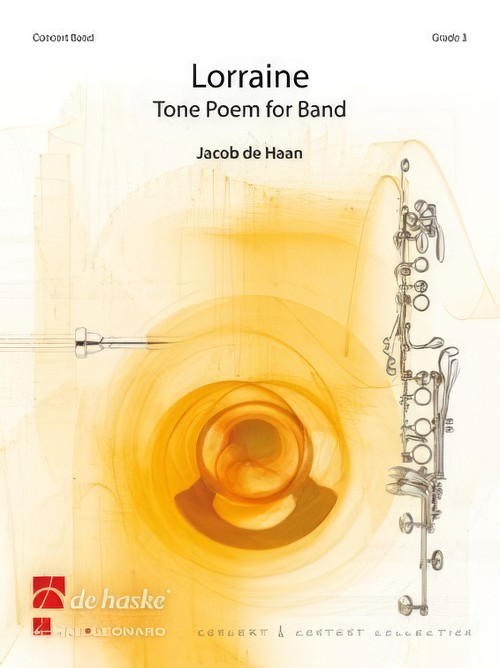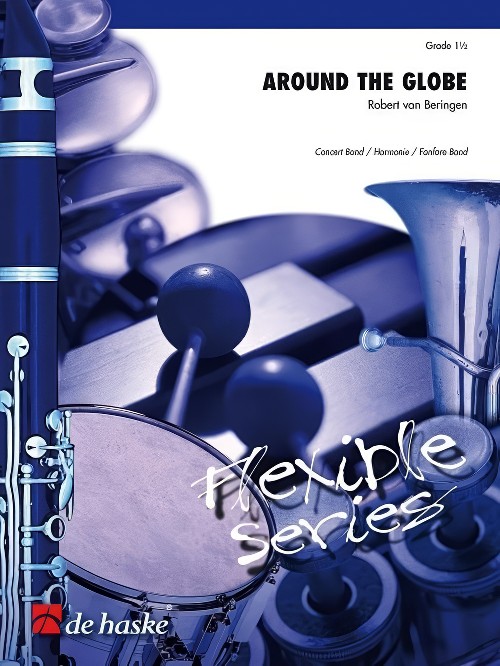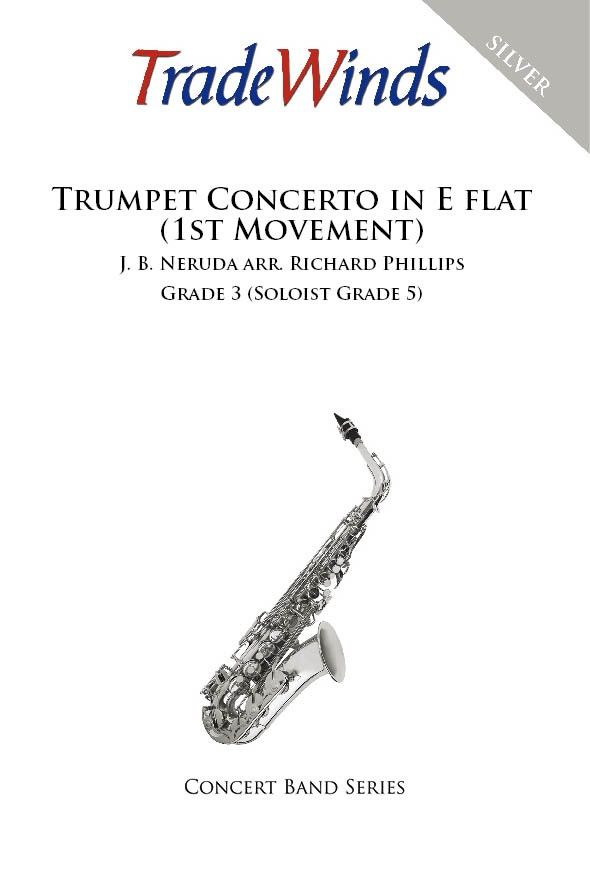Results
-
£119.00
-
 £108.10
£108.10Folksongs From Germany - Lutz Bürger
Estimated dispatch 7-14 working days
-
 £38.20
£38.20National Anthem of Germany and Austria - Wolfgang Amadeus Mozart
Estimated dispatch 7-14 working days
-
 £24.95
£24.95NATIONAL ANTHEMS (Germany & Holland) (1954) (Military Band) - Richardson, Norman
The German and Dutch National Anthems (1954) Marchcard-size
Estimated dispatch 7-14 working days
-
 £113.30
£113.30Moderate Dances - Angelo Sormani
This piece is a tribute to dance music, especially passionate, intense and meditative dance music. "Moderate Dances" is divided into three movements: a "Tango", a "Slow Waltz" and a "Bossa Nova". Each movement and each dance has its own particular characteristics but, when combined, these different rhythmic beats and times give the piece a feeling of completeness and uniformity. The Tango started to flourish in the suburbs of Buenos Aires in around 1880. There is still some doubt as to its origins, which may be Cuban (Habanera) but are probably African. It was most popular in Argentina and Brazil: here the male protagonist was originally the "gaucho" with his inseparable guitar, later to be replaced by the proud, elegant "compadre". By around 1910 the Tango had spread to Italy and France. New clubs opened, where the upper classes could watch and dance the Tango. Here the dance also underwent some rapid transformations. The exaggerated and extravagant gestures and body movements disappeared. Slow, gliding steps replaced the old rotational movements. The women's red ankle-boots and the partners "staring into each other's eyes" accentuated the erotic nature and sensuality of this dance. So much so that, in 1913, the German government banned soldiers from dancing the Tango. Those who broke the law were immediately discharged from the army. From a strictly musical perspective, the basic instruments were a flute, a harp (the diatonic harp typically played by the Indians of Paraguay) and a violin, or flute, guitar and violin or even clarinet, guitar and violin. These instruments were easy to transport, ideal for playing at parties, in the streets and in courtyards. The musicians played by ear, frequently improvising: there were no scores, no records, which is the main reason why it is impossible to trace the Tango back to its exact origins. However, the Tango's evolution (and growing popularity) was once again fostered by its fundamental ability to absorb "other" cultures, languages and sounds. And it was the arrival of the "bandoneon" (an accordion-like instrument that was invented in Germany and brought to Rio de la Plata by some immigrant), which replaced the flute, that marked the beginning of the Tango's huge success outside Argentina. A number of talented composers, above all the great Astor Piazzola (1921-1992), transformed the bandoneon from a simple accompanying instrument to a solo instrument that was to become the distinguishing feature of the 20th century Tango. The Slow Waltz originated from the Waltz, the typical dance of the Bavarian and Tyrolese peasants in the 1700s. It was composers like Johann Strauss, father and son, who carried the Waltz to its zenith in the 1800s, creating the sensual and melancholy yet joyful and charming dance we are all familiar with. When the Waltz first became popular in Germany, the members of respectable society were shocked at the closeness of the dancing partners, who had always previously danced apart. The main difference between the Waltz and Slow Waltz is that the latter has a slower, more expressive rhythm: the men wear tails and the women wear ball gowns decorated with beads and feathers and couples dance in graceful rotational movements. "Bossa Nova" is the title of the last movement in the piece. Jobim, the great Brazilian musician, described this musical genre as a combination of modern Jazz and Samba. Bossa Nova means "new wave". This was the name of the artistic and musical movement that evolved in Brazil in the late Fifties and was extremely popular throughout the Sixties. The songs are usually about love or social matters, drawing inspiration from the slums of Rio De Janeiro and the lives of their inhabitants. Bossa Nova, with its original compositions and the artistic talent of its musicians, also became hugely popular in the United States and Europe, and top Jazz musicians (Ella Fitzgerald, Stan Getz, Bob Cooper, Charlie Bird, Sonny Rollins, Dexter Gordon, Dizzy Gillespie) started to include Bossa in their repertoires.
Estimated dispatch 7-14 working days
-
 £139.99
£139.99Lorraine - Jacob de Haan
This moving symphonic poem is about the French region of Lorraine. Since the time of the Roman Empire, Lorraine has been ruled by either Germany or France with wars redrawing national boundaries many times over the years. While its history has been bloody, folk music from the region breaks up the tension in the piece and offers many uplifting moments. An optimistic conclusion features a mixture of music from the three countries Lorraine sits between: Luxembourg, Germany and France.
Estimated dispatch 7-14 working days
-
 £139.99
£139.99Lorraine (Concert Band - Score and Parts) - De Haan, Jacob
This moving symphonic poem is about the French region of Lorraine. Since the time of the Roman Empire, Lorraine has been ruled by either Germany or France with wars redrawing national boundaries many times over the years. While its history has been bloody, folk music from the region breaks up the tension in the piece and offers many uplifting moments. An optimistic conclusion features a mixture of music from the three countries Lorraine sits between: Luxembourg, Germany and France.Duration: 10:45
Estimated dispatch 7-14 working days
-
 £68.99
£68.99Around the Globe (Flexible Ensemble - Score and Parts) - Beringen, Robert van
Around the Globe is an easy suite for youth band or ensemble. The work, which was written for flexible instrumentation, increases in difficulty. On this journey, we travel through the United States, Germany, the Czech Republic and end in England with Rule Britannia' of course!Includes:From the New World (United States of America)Haydn Fantasy (Germany)Rule Britannia (England)Duration: 5:15
Estimated dispatch 7-14 working days
-
£44.95
Trumpet Concerto in E Flat (1st Movement) - J. B. Neruda
Johan Baptist Georg Neruda was a classical composer born in Bohemia which is now part of the Czech Republic. Very little is known about this composer other than he had a good reputation as a violinist and conductor in Prague and Germany and became the Konzertmeister of the Dresden Court Orchestra.
Estimated dispatch 7-14 working days
-
 £44.95
£44.95Trumpet Concerto in E Flat (1st Movement)
Composer: J. B. NerudaDuration: 6:00Series: Silver TradeWinds Concert Band SeriesGrade/Difficulty: 28Arranger: Richard PhillipsJohan Baptist Georg Neruda was a classical composer born in Bohemia which is now part of the Czech Republic. Very little is known about this composer other than he had a good reputation as a violinist and conductor in Prague and Germany and became the Konzertmeister of the Dresden Court Orchestra.
Estimated dispatch 7-14 working days
